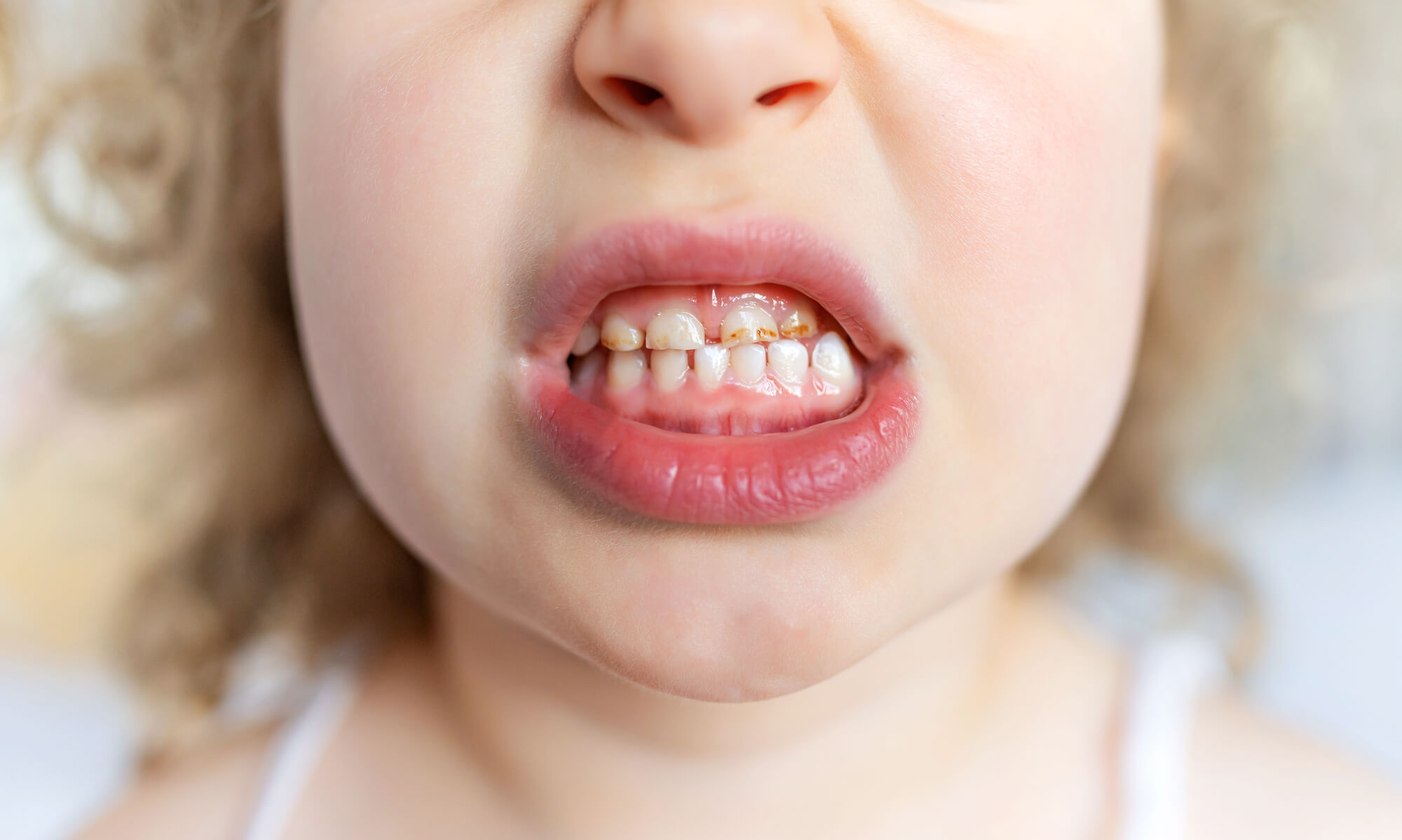Kids love candy, sweet drinks, and skipping brushing at night. While it’s well known that this is the recipe for cavities, another particularly harmful consequence of bad oral hygiene in children is often overlooked. However, tooth decay isn’t the only reason for the necessity of pediatric dentistry in Franklin.
Bad oral hygiene and plaque buildup can lead to your child developing gum disease, a dangerous infection that affects the soft tissue surrounding the teeth. While often overlooked, gum disease can have serious consequences for our child’s smile, and here we’ll give you some tips on how to prevent that.

What Is Gum Disease?
Gum disease, or periodontitis, is a serious bacterial infection that affects the soft tissues of your mouth. It destroys the gums and supporting structures of the teeth.
Gum inflammation, redness, and bleeding are the initial symptoms of gum disease. With the right treatment, gum disease can be reversed at this point. But if left untreated, it can develop into periodontitis, a more serious kind of gum disease that can cause irreversible harm.
When gum disease is severe, the gums and other tissues may deteriorate. Alveolar bone tissue—the bone that teeth are rooted in—is often lost, and teeth may fall out.
What Are the Symptoms of Gum Disease in Children?
Gum disease can range from mild to severe, each stage showing its specific type of symptoms. Most children with gum disease have the mildest form, known as gingivitis, which causes the gums to become red, swollen, and sore.
Pain is not a symptom of gingivitis, so identifying it can be harder. However, some signs to look out for in your child include:
- Inflammation, red gums
- Signs of bleeding when brushing or flossing
- Appearance of longer teeth due to gums pulling away or receding
- Constant bad breath
- Increase spacing between teeth
- Loose teeth
- Pus between the teeth and gums
- A change in bite and jaw alignment
It can be easy to confuse these symptoms with other health problems, so visiting a dental professional for an accurate diagnosis is key.

What Causes Gum Disease in a Child?
Gum disease might seem like an adult problem, but it’s more common in children than you think. Certain factors make young people vulnerable, particularly during hormonal changes associated with puberty. Gums that receive greater blood flow may become more reactive and sensitive to irritants like plaque.
This explains why gum inflammation is more common in teens than in anyone else at this age.
Nevertheless, gingivitis is mainly caused by the buildup of plaque on the teeth, which consists of bacteria. These bacteria release acids that eat away your dental enamel and irritate the gums. Eventually, plaque can harden into tartar, which can be hard to remove even with proper brushing and flossing.
Over time, the gums get inflamed and sore. Then, they’ll progressively start to recede, leaving your child’s most sensitive roots exposed to decay and damage.
The role of diet is also very important. Sugary snacks and drinks are consumed by many kids and teenagers, which encourages the growth of bad oral bacteria. These bacteria create poisons and acids that irritate the gums and harm tooth enamel.
Risk Factors of Gum Disease in Children
Bad oral hygiene habits are the main cause of this procedure. However, certain conditions can make children more prone to developing gum disease. Some of these include:
- Genetical conditions
- Misaligned teeth that allow for food to get stuck in the mouth
- Mouth breathing, which reduces saliva formation. Saliva is key to removing food debris and plaque.
- Poor dietary habits
- Autoimmune or systemic diseases
- Diabetes
- Hormonal changes in the body
- Teeth grinding
- Certain medicines that can cause an overgrowth of the gums
How Is Gum Disease Diagnosed in a Child?
A dental professional can sometimes diagnose gum disease during a visual examination. We may also need the complete history of your child’s oral health and dental X-rays.
In some cases, saliva testing can help determine whether there’s a gingival infection. This allows us to precisely identify the amount and type of bacteria causing harm.
How Do We Treat Gum Disease in Children?
Treatment for gum disease can vary depending on the stage of the infection, your child’s age, and their overall health.
Early treatment guarantees the best outcomes, so it is important to identify the symptoms promptly. Addressing the infection before it worsens can prevent the most dangerous aftereffects, like bone and tooth loss.
To do so, some of the processes we may recommend are:
- Deep Cleaning (Root Planing and Scaling): In the early stages of the disease, a deep cleaning can help remove the plaque and tartar beneath the gums and the affected tissue, if needed. Additionally, it might smooth the teeth's damaged root surfaces so that the gums can rejoin the teeth.
- Medicine: We may prescribe antibiotics to help eliminate infections. These can be placed in the periodontal pockets or taken as oral pills.
- Surgery: When gum disease is advanced, completely removing the infected areas under the gums may be necessary. Then, the tissues can be reshaped or replaced.
How Can I Help Prevent Gum Disease From Happening?
The secret to preventing gum disease lies in enforcing good dental habits. To do so, make sure your child:
- Brushes their teeth after every meal
- Use a toothbrush appropriate to their age and size
- Flosses daily
- Visits the pediatric dentist every 6 months
- Eats healthy foods, limiting sugar intake

Understand Gum Disease in Children and Get Help Through Pediatric Dentistry in Franklin
Gum disease is often overlooked but is as common and damaging as cavities. While the first effects are mild, this condition can easily escalate to more serious issues if left untreated. To prevent that, it’s important for parents to recognize early warning signs.
Additionally, understanding what causes gum disease allows you to start taking preventive measures to avoid it. By visiting Happy Harpeth Pediatric Dentistry & Orthodontics regularly, we can work together to ensure your child’s smile stays healthy and bright, so contact us today!





